
ATOMIC SPECTROSCOPY
Scope & Guideline
Driving Progress in Spectroscopic Methodologies.
Introduction
Aims and Scopes
- Development of Novel Spectroscopic Techniques:
The journal emphasizes the innovation and refinement of spectroscopic methods, such as Laser-Induced Breakdown Spectroscopy (LIBS), Inductively Coupled Plasma Mass Spectrometry (ICP-MS), and X-ray Fluorescence (XRF), aimed at enhancing sensitivity and accuracy in elemental analysis. - Application in Environmental and Biological Sciences:
Research articles frequently highlight the application of atomic spectrometric techniques for analyzing environmental samples (e.g., water, soil, air) and biological matrices (e.g., tissues, fluids), addressing critical issues such as pollution and health. - Characterization of Geological and Material Samples:
A significant focus is placed on the characterization of geological materials, reference materials, and industrial samples, contributing to advancements in geochemistry, mineralogy, and material science. - Isotopic Analysis and Metallomics:
The journal showcases research on isotopic analysis using MC-ICP-MS and other techniques, which is pivotal for tracing elemental sources, studying environmental processes, and understanding biological interactions. - Innovative Sample Preparation and Processing Methods:
Research often includes advancements in sample preparation techniques that enhance the efficiency and effectiveness of spectrometric analyses, such as solid-phase extraction and preconcentration methods.
Trending and Emerging
- Nanotechnology and Nanoscale Analysis:
Recent publications indicate a growing interest in nanotechnology, with studies focusing on nanoscale analysis and the application of atomic spectrometry to characterize nanomaterials and their interactions. - Portable and Field-Deployable Spectroscopy:
There is an increasing trend towards the development and application of portable spectroscopic devices, facilitating on-site analysis for environmental monitoring and field studies, which enhances accessibility and immediate data acquisition. - Metallomics and Trace Element Research:
Emerging themes in metallomics reflect a heightened focus on understanding the roles of trace elements in biological systems, including health implications and environmental interactions, showcasing the relevance of atomic spectrometry in life sciences. - Advanced Data Processing and Analytical Techniques:
Innovations in data processing methodologies, including machine learning and statistical approaches, are becoming prominent, enhancing the interpretation and accuracy of spectrometric data. - Sustainable and Green Analytical Chemistry:
There is a rising emphasis on sustainability in analytical chemistry, with studies exploring environmentally friendly methods for sample preparation and analysis, aligning with global trends towards greener practices.
Declining or Waning
- Traditional Atomic Absorption Spectrometry (AAS):
There is a noticeable decrease in publications focused on traditional AAS methods, likely due to the rise of more sensitive and versatile techniques such as ICP-MS and LIBS, which offer broader applications and improved performance. - Basic Spectroscopic Theory and Fundamentals:
Papers that delve into basic theoretical aspects of spectroscopy have become less frequent, as the journal appears to prioritize applied research and methodological advancements over foundational studies. - Low-Resolution Spectroscopic Techniques:
With advancements in high-resolution spectroscopic techniques, there has been a decline in the publication of studies that utilize low-resolution methods, as researchers aim for more precise and accurate analytical capabilities. - Generalized Reviews on Established Techniques:
Although reviews remain important, there has been a shift away from generalized reviews of established techniques towards more focused studies that present novel applications or methodological improvements.
Similar Journals
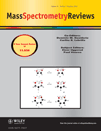
MASS SPECTROMETRY REVIEWS
Elevating Standards in Spectroscopic AnalysisMASS SPECTROMETRY REVIEWS, published by Wiley, is a premier academic journal dedicated to advancing the field of mass spectrometry and its applications across a multitude of scientific disciplines. With an ISSN of 0277-7037 and an E-ISSN of 1098-2787, the journal has established itself as a vital resource within the realms of Analytical Chemistry, Biochemistry, Genetics, Condensed Matter Physics, and Spectroscopy, achieving Q1 status across these categories in 2023. As a testament to its significant contribution to scholarly research, it boasts impressive Scopus rankings, including a rank of #2 out of 76 in Chemistry - Spectroscopy and #4 out of 156 in Chemistry - Analytical Chemistry, placing it in the 97th percentile and above. Emphasizing high-quality, peer-reviewed research, MASS SPECTROMETRY REVIEWS serves as an essential platform for researchers, professionals, and students aiming to stay abreast of cutting-edge developments and methodologies in mass spectrometry. The journal is committed to fostering a deeper understanding of mass spectrometric techniques while also contributing to interdisciplinary advancements, making it a valuable addition to any academic library. Authors seeking to disseminate their work in a journal with a strong reputation and impact in the scientific community will find MASS SPECTROMETRY REVIEWS an ideal venue.
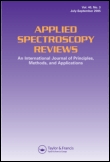
APPLIED SPECTROSCOPY REVIEWS
Illuminating Advances in Applied SpectroscopyAPPLIED SPECTROSCOPY REVIEWS, published by Taylor & Francis Inc, is a premier journal in the field of spectroscopy and instrumentation, housed in the United States. With an impressive 2023 impact factor reflecting its esteemed presence, this journal stands out in both the Physics and Astronomy (Rank #5/141, Percentile 96th) and Chemistry (Rank #6/76, Percentile 92nd) disciplines. Spanning over five decades since its inception in 1967, the journal has made significant contributions to the understanding of spectroscopy applications across a wide array of scientific fields. With a focus on publishing high-quality reviews that summarize and synthesize advances in the field, APPLIED SPECTROSCOPY REVIEWS aims to serve as a vital resource for researchers, professionals, and students alike. This journal, classified in the top quartile (Q1) for both its categories in 2023, underscores its integral role in advancing knowledge and innovation in the spectroscopy community. Though not open access, it remains an essential read for those seeking comprehensive insights and developments within the realm of applied spectroscopy.
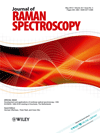
JOURNAL OF RAMAN SPECTROSCOPY
Elevating materials science with cutting-edge Raman applications.JOURNAL OF RAMAN SPECTROSCOPY, published by WILEY, is a leading journal dedicated to advancing the field of Raman spectroscopy and its applications across diverse scientific disciplines. With an impact factor reflective of its esteemed reputation, this journal positions itself in the Q2 category for both Materials Science and Spectroscopy in the 2023 rankings, demonstrating its relevance and contribution to these fields. Since its inception in 1973, it has consistently provided a platform for innovative research, offering valuable insights and methodologies to researchers, professionals, and students alike. The journal caters to a global audience and includes peer-reviewed articles that encapsulate groundbreaking findings and evolving trends in spectroscopy, enriching our understanding and implementation of this vital analytical technique. While it does not offer Open Access options, its content is accessible through institutional subscriptions, ensuring broad dissemination in the scientific community. By bridging theoretical knowledge and practical applications, the JOURNAL OF RAMAN SPECTROSCOPY plays a pivotal role in shaping the future of materials analysis and characterization.

MICROCHEMICAL JOURNAL
Illuminating the Path of Spectroscopic DiscoveriesMicrochemical Journal, published by Elsevier, stands as a leading scholarly publication in the fields of Analytical Chemistry and Spectroscopy, boasting impressive rankings of Q1 and Q2 in their respective categories for 2023. With an H-index reflecting its substantial impact and relevance, this journal has been a cornerstone of research dissemination since its inception in 1957, and it continues to play a vital role in advancing the methodological and technological innovations within these disciplines. The journal presents peer-reviewed articles that explore a wide array of topics, making it an essential resource for researchers, professionals, and students keen on the latest advancements in microchemical processes and techniques. Although it does not currently offer open access options, its publication through Elsevier ensures a high standard of academic integrity and wide accessibility through various academic institutions. With a strong Scopus ranking—9th in Chemistry Spectroscopy and 22nd in Analytical Chemistry—Microchemical Journal is an indispensable platform for empirical studies, insightful reviews, and pioneering methodologies in the microchemical domain.

ANALYTICAL AND BIOANALYTICAL CHEMISTRY
Unveiling the Complexities of Chemical AnalysisANALYTICAL AND BIOANALYTICAL CHEMISTRY, published by SPRINGER HEIDELBERG, is a leading international journal that serves as a vital platform for innovative research in the fields of analytical and bioanalytical chemistry. With an impressive impact factor and ranking in the Q2 category for both Analytical Chemistry and Biochemistry, the journal highlights key advancements and methodologies that drive the discipline forward. Established in 1996 and continuing vigorously into 2024, it has gained significant recognition with Scopus rankings placing it in the 83rd and 78th percentiles within its categories, underscoring its impact and relevance. The journal's commitment to open access facilitates widespread dissemination of critical scientific knowledge, making it an essential resource for researchers, professionals, and students dedicated to exploring the complexities of chemical analysis. With its base in Heidelberg, Germany, ANALYTICAL AND BIOANALYTICAL CHEMISTRY continues to inspire and influence the global research community.

Molbank is an open-access journal published by MDPI, dedicated to the fields of Biochemistry, Organic Chemistry, and Physical and Theoretical Chemistry. Established in 2002, this journal has served as a vital platform for the dissemination of research findings, where researchers and professionals share original articles focusing on molecular chemistry, synthesis, and related studies. With a commitment to open access, Molbank enables global access to scientific knowledge, fostering collaboration and innovation among scientists. While currently categorized in the fourth quartile for its field rankings, it provides a unique opportunity for emerging scholars to contribute to and engage with the scientific community. The journal is based in Switzerland, operating from its office at ST ALBAN-ANLAGE 66, CH-4052 BASEL, SWITZERLAND, and continues to attract submissions until 2024. Researchers, students, and professionals looking to expand their knowledge and participate in the dialogue of current molecular chemistry can benefit significantly from engaging with the content published in Molbank.

MICROSCOPY AND MICROANALYSIS
Pioneering Research in Microscopy and InstrumentationMICROSCOPY AND MICROANALYSIS is a prestigious academic journal published by Oxford University Press, specializing in the interdisciplinary fields of microscopy and microanalysis. With an ISSN of 1431-9276 and an E-ISSN of 1435-8115, this journal serves as a vital platform for the dissemination of high-quality research findings, innovative methodologies, and advancements in instrumentation techniques from its inception in 1995 to its ongoing contributions projected to 2024. As a Q3 ranked journal in the category of Instrumentation, it plays a crucial role in shaping the future of microscopy by providing researchers, professionals, and students with insights into cutting-edge technologies and applications. Although it does not currently offer open access, the journal remains committed to the academic community by maintaining rigorous peer-review standards and producing scholarly articles that are essential for advancing the understanding of materials at microscopic levels. By bridging the gap between theory and practical application, MICROSCOPY AND MICROANALYSIS is an indispensable resource for those involved in these dynamic scientific fields.
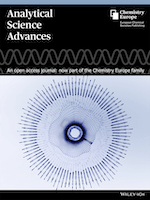
Analytical Science Advances
Transforming Analytical Chemistry Through High-Quality ResearchAnalytical Science Advances is a dynamic journal published by WILEY, dedicated to the ever-evolving field of analytical chemistry. With an ISSN of 2628-5452, this open-access platform aims to disseminate high-quality research and insightful reviews that push the boundaries of analytical methodologies and instrumentation. Since its inception in 2020, the journal has gained traction, securing a commendable Q2 ranking in 2023 within its category, highlighting its significance in the scientific community. Currently positioned at Rank #68 out of 156 in Scopus' analytical chemistry category, it boasts a 56th percentile ranking, reflecting its contributions to advancing analytical techniques. Researchers, professionals, and students will find this journal an invaluable resource for keeping abreast of the latest developments, emerging technologies, and innovative approaches in analytical science, ensuring the journal's relevancy and influence in shaping future discoveries.
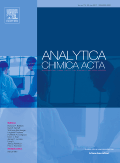
Analytica Chimica Acta
Elevating the discourse in spectroscopy and biochemistry.Analytica Chimica Acta is a prestigious peer-reviewed journal published by ELSEVIER, renowned for its significant contribution to the fields of analytical chemistry, biochemistry, environmental chemistry, and spectroscopy. Established in 1947, this journal has solidified its reputation, reflected in its impressive impact factors and Scopus rankings, including a Q1 classification in Analytical Chemistry and Spectroscopy, and a Q2 ranking in both Biochemistry and Environmental Chemistry. With its comprehensive scope, Analytica Chimica Acta aims to publish innovative research, critical reviews, and technical notes that advance the understanding and application of analytical methods. As an essential resource for researchers, professionals, and students alike, it encourages the dissemination of high-quality research that addresses contemporary challenges in chemical analysis and promotes interdisciplinary collaboration. While the journal operates primarily on a subscription basis, it also offers unique opportunities for authors to reach a broad audience and engage in the global scientific discourse.

Analytical Science and Technology
Exploring the forefront of analytical techniques and insights.Analytical Science and Technology is a prominent journal dedicated to advancing the fields of analytical chemistry and technology, published by the Korean Society for Analytical Science. Based in South Korea, this journal serves as a vital platform for researchers, professionals, and students committed to exploring innovative analytical techniques and methodologies. Although it is classified under Q4 in various subject categories, including Agronomy and Crop Science, Environmental Chemistry, and Pharmacology, the journal aims to provide critical insights and contributions to the scientific community. With ISSN 1225-0163 and E-ISSN 2288-8985, it spans a converged timeline from 2019 to 2024. Despite its current standings in Scopus rankings, the journal is dedicated to improving its visibility and impact through rigorous peer review and high-quality publications, fostering knowledge sharing within its diverse academic fields. Researchers looking for a reliable outlet for their findings are encouraged to consider this journal as it continues to strive for excellence in analytical science.